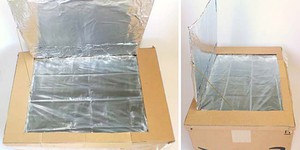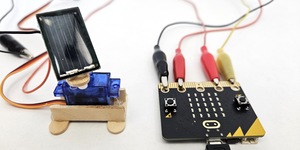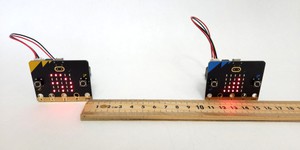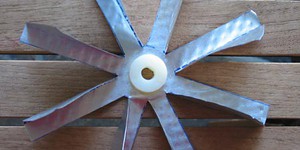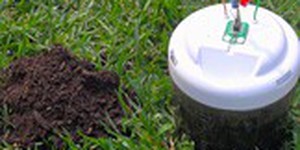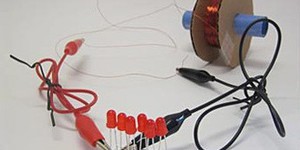Middle School, Energy & Power Science Projects (32 results)
Whether you are working, studying, or being entertained, much of our daily routines rely on being plugged-in. You probably don't spend a lot of time thinking about where all that power comes from, but someone has to! Figuring out the best ways to produce energy is a big job that is growing along with the world's population. Energy production is a complex topic with debates about whether to invest in fossil fuels or clean renewable energies like solar, wind, water, and geothermal. Take a first-hand look at some of the problems and challenges scientists and engineers are tackling as they look at making and storing energy.
|
Select a resource
Coding Projects
Sort by
|
Imagine telling your friends about your latest science project: using a battery to make a light turn on. You might get some blank stares...sounds a little boring and basic, right? Now tell them you will do it with a potato! Yes, you can actually use fruits and vegetables as part of an electric power source! Batteries power many things around you, including cell phones, wireless video game controllers, and smoke detectors. In this science project, you will learn about the basics of battery…
Read more
Do you want to build a solar-powered car? How about enter it in a competition and race it against other people's designs? If so, this is the project for you! These instructions will show you how to get started building a solar-powered car that you can enter in a science or engineering fair. No experience needed.
If you want, you can even compete in the Junior Solar Sprint, a regional competition for solar-powered cars. Get more information about your
regional competition.
Are you a…
Read more
New
Can AI understand human language? In the future, AI could aid in emergency interpretive service in the hospital when translators aren't available. But can current AI algorithms understand non-verbal languages like sign language? In this science project, you will test whether AI can learn sign language gestures or phrases to see if it can be used for interpretation.
Read more
Here is a project that uses direct solar power, gathering the sun's rays for heating/sterilizing water or cooking. It is a low-cost technology that seems to have everything going for it. Does it work? Can you find ways to improve it? Find out with this project.
Read more
How can you get as much power as possible out of a solar panel, even in the morning or evening when the sun is low in the sky? With a solar tracker system! While many solar panels are fixed in place on rooftops or large ground-mounted poles, a solar tracker system is motorized and lets the solar panels track the sun through the sky during the day. Are these systems worth the added complexity? How much more power do they produce? Try this project and find out!
Read more
How can you squeeze as much power as possible out of solar panels if you do not have a lot of space to install them? By tracking the sun! Keeping a solar panel pointed directly at the sun throughout the day can maximize the amount of power it produces. In this project you will design, build, and test your own miniature solar tracking system using a fun block-based programming language - no coding experience required!
Read more
New
Are you ever annoyed by a poor Wi-Fi signal? What about when you try to send a text message, and it just won't go through because of poor cell service? Have you ever wondered what factors affect the strength of your signal and the speed of the connection? If so, this project is for you!
Read more
Earth is an amazing planet. It has everything that we need: food, shelter, and water. Sure, we need water to drink, but have you thought about using water to create energy? Moving water has a lot of energy and all we need to do is to harness it. Moving water made the Grand Canyon. That took a lot of energy! In this science fair project, you will demonstrate the power of water by converting the kinetic energy in moving water to mechanical energy, which will lift a small weight.
Read more
What can you do with a bucket of soil? You could use it to grow some beautiful plants and vegetables—or you could use it to produce electricity! Surprised about that? You actually can power electric devices with just mud! Are you curious about how this works? You need some little helpers in the soil—bacteria—that are able to turn their food sources within the soil into electricity in a device called a microbial fuel cell. But is this possible with any soil and does the soil…
Read more
Have you ever dreamed of a world where you could take the scraps from last night's dinner and toss them into your car's fuel tank and make gas? Well, we're not quite in "Back to the Future" yet, but in this energy science fair project, you'll discover that food scraps, dead plants, sawdust, and other decaying organic matter, called biomass are a rich source of energy. You can get energy out of biomass by burning it, turning it into a liquid, or by turning it into a gas called biogas. You've…
Read more
You have probably read all about forms of alternative energy like solar and wind power. But what about human power? With the aid of a coil of wire and some magnets, you can generate electricity with nothing more than a flick of your wrist. In this project, you will build a small hand-powered electrical generator that can power a series of tiny lights. Get ready to save the planet and get some exercise at the same time!
Read more
You might know that we are able to get renewable energy from the Sun, the wind, and water, but did you know we can get renewable energy from Earth itself? The temperature inside of Earth can reach 9,000°F—that kind of heat can be used to make a lot of energy here on the surface! This source of energy is called geothermal energy and it is all about taking advantage of the heat within Earth. So try this science fair project out and find out how to use the heat that lies beneath your…
Read more
|





